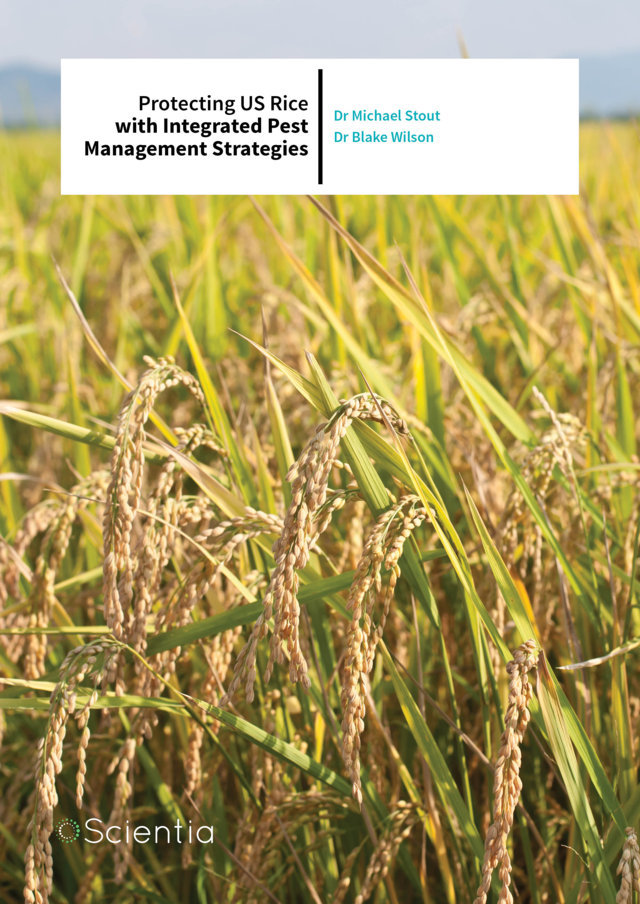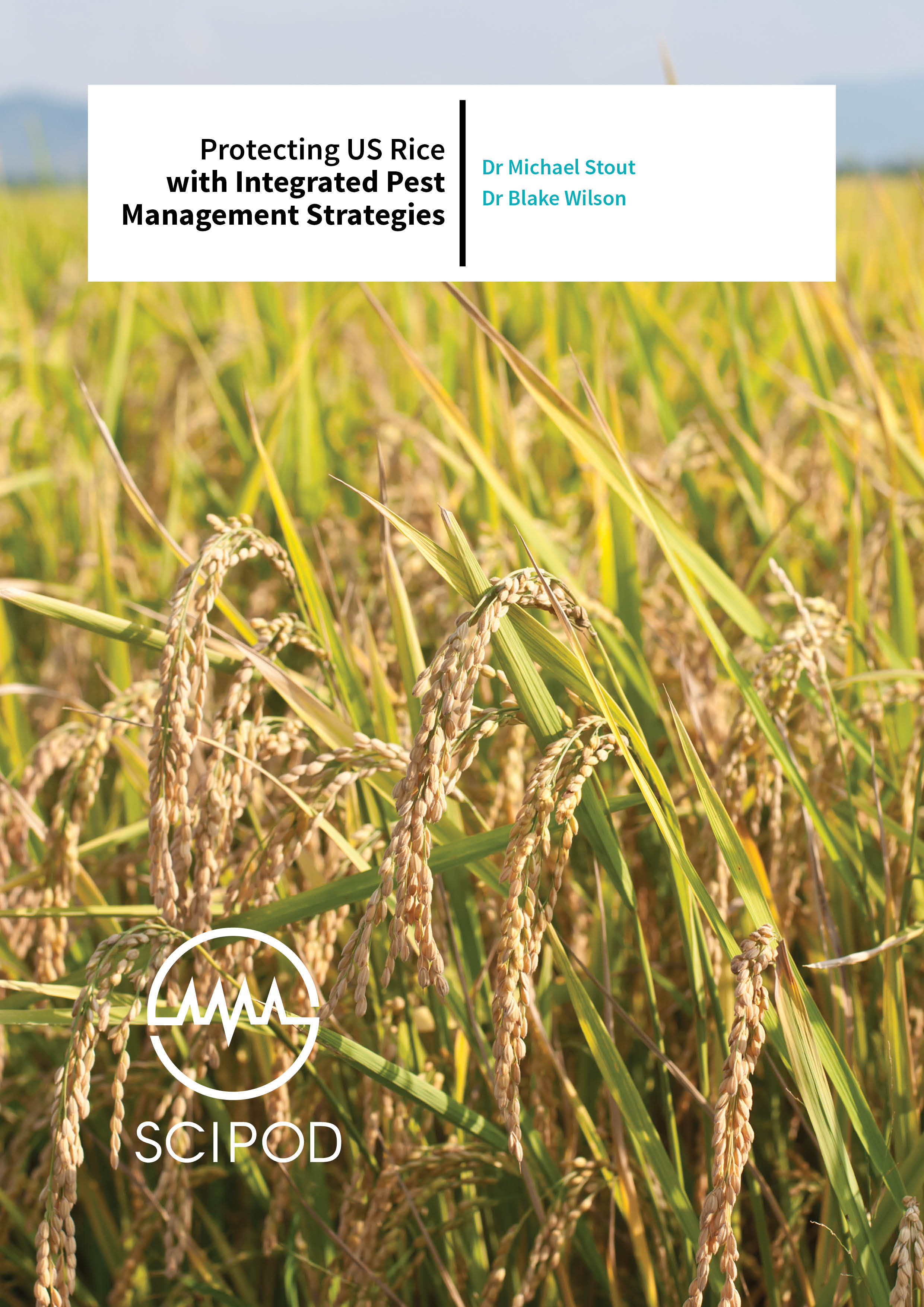Dr Michael Stout | Dr Blake Wilson – Protecting United States Rice with Integrated Pest Management Strategies
US rice production is threatened by the expansion of the Mexican rice borer, and a host of other pests. Dr Michael Stout, Dr Blake Wilson and their colleagues at Louisiana State University are investigating integrated pest management strategies to reduce the agricultural impacts of these pests.
The Mexican Rice Borer – An Emerging Threat to US Rice
The small city of Crowley, Acadia Parish, in the heart of Louisiana’s rice belt is known as the ‘Rice capital of America’ – and deservedly so. Crowley was a major centre for rice harvesting and milling – giving the city a distinctive identity. Some of its historic mills are still operating and rice is the main crop for local farmers. Every October, the International Rice Festival is held in downtown Crowley, celebrating the harvest. With a range of fun activities – fairground amusements, live music, cooking demonstrations and the crowning of the Festival Queen – this is one weekend in Southwestern Louisiana’s calendar not to be missed! The Festival is a curious hybrid of a state fair and trade convention. Tourists and locals jostle with industry officials, farmers and suppliers. Rice is big business in Louisiana, and indeed the southern US. The states of Arkansas, California, Louisiana, Mississippi, Missouri and Texas together produce 18 billion pounds annually, with 15% exported (http://www.thinkrice.com/on-the-farm/where-is-rice-grown/).
Rice is the bedrock of the local Creole and Cajun cuisines, and a steaming bowl of homemade gumbo and rice is the epitome of Louisiana’s Southern hospitality. Rice is deeply entrenched in Louisiana’s culture and economy – as the festivities at Crowley testify. However, the state’s rice industry is incredibly fragile. Several factors have made rice production less profitable – high agricultural costs, international competition, a limited domestic market, and most recently the spread of the Mexican rice borer, an invasive pest. Many rice farmers have thus gone out of business. In fact, in the countryside around Crowley, rice fields have been repurposed as ponds for farming crawfish. Despite the decline, rice remains one of the state’s top agricultural export, with an annual crop of 360 million USD.
The Mexican rice borer, Eoreuma loftini, belongs to the Crambidae (grass-moth) family of the Lepidoptera order of insects, which includes butterflies and moths. Adults have delta-shaped wings and a distinctive light tan colour. However, it is the larvae that are particularly worrisome for crop growers – as they feed on and bore through grass plants, including sugarcane and rice, causing great damage to crops. The adults lay eggs on dried grass leaves. Upon hatching, the larvae – distinctive with a whitish colour, light-coloured heads and purple stripes down the length of the bodies – feed on fresh leaf sheaths. They bore tunnels in the stems or stalks, filling them with frass (excrement), and then undergo metamorphosis, whereupon the young adult emerges.
‘By combining research efforts in the fields of chemical and landscape ecology with applied pest management practices, we hope to enhance the sustainability of agricultural production in the US’ – Dr Wilson
Originating in Mexico, this insect has entered and proliferated in the US over the last 40 years, decimating agriculture of sugarcane, rice, sorghum and maize. The pest was detected in Rio Grande Valley, Texas in 1980, and soon became a major pest of Texas sugarcane (Saccharum spp.). It then spread to Texas rice, and over the past two decades, it has become a significant pest of the Texas rice industry. It has since been slowly expanding north-easterly along the US Gulf Coast. A quarantine blocking shipment of east Texas sugarcane into Louisiana was implemented in 2005 to slow the spread into Louisiana. However, even this didn’t stop the invasion, and in 2008, the Mexican rice borer was detected in Southwestern Louisiana. This hardy moth can survive below freezing temperatures, and is likely to expand further north-eastwards into the rest of Louisiana, and the colder states of Mississippi and Arkansas – with huge projected economic costs. If this were to happen, losses of 220 million USD to south-eastern Louisiana’s sugarcane industry are projected – unless urgent action is taken.
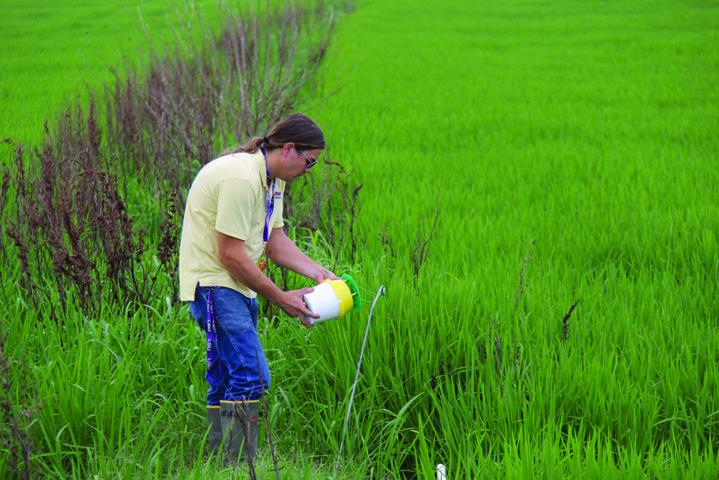
Integrated Pest Management for Louisianan Rice Production
Dr Michael Stout and Dr Blake Wilson, and their groups at the Department of Entomology, Louisiana State University, are experts in crop entomology. They are investigating the biology of insect pests, including E. loftini, and are implementing integrated pest management approaches to mitigate its damage to rice and other crops. Integrated pest management is a holistic approach to managing crop pests, geared towards sustainability and responsible stewardship of agricultural ecosystems. According to Dr Stout, ‘Modern integrated pest management is (or should be) applied ecology, and good integrated pest management programs are founded upon a thorough understanding of the ecological interactions among the crop plant, the herbivore pest, and the other organisms such as predators or microorganisms that interact with the crop plant or the herbivore.’
The Mexican rice borer is not the only pest to damage rice in Louisiana. Established pests include the rice water weevil (Lissorhoptrus oryzophilus), fall armyworm (Spodoptera frugiperda), sheath blight (Rhizoctonia solani), and the sugarcane borer (Diatraea saccharalis) – which typically affects sugarcane but occasionally damages rice. Integration is an important component of integrated pest management programmes – such as multiple tactics against one pest, or a single tactic that impacts multiple pests. Drs Wilson and Stout and their colleagues aim to develop integrated pest management programmes that coordinate the management of Mexican rice borers, with existing tactics against established pests. Given the scale and speed of Mexican rice borer proliferation, this is a high-priority endeavour.
The team carries out their studies on rice – mainly in small plot field experiments at the LSU AgCenter Rice Research Station in Crowley and the Texas AgriLife Rice Research and Extension Center in Beaumont, Texas. These involve growing rice under carefully controlled conditions, and controlled infestations of Mexican rice borers, rice water weevils, sheath blight and sugarcane borers – to assess the influence of various factors on pest severity.
Tracking the Spread of the Mexican Rice Borer with Pheromone Traps
Out in the field, Drs Stout and Wilson are tracking the spread of the Mexican rice borer through Louisiana using pheromone traps. These traps are baited with insect sex pheromones – chemicals that female insects release into the air to attract males for mating. The team use a specific blend of sex pheromones in their traps to mimic that released by E. Loftini. Male Mexican rice borers mistake these traps for females and become stuck in the traps – providing an indication of Mexican rice borer populations within a region. Between 2013 and 2015, the team set up 77 pheromone traps throughout southwestern Louisiana, with male moths captured in every location – indicating that the moths are thriving here. ‘Monitoring of pest populations across large areas and applying principles of landscape ecology can improve our understanding of pest interactions and identify area-wide trends in pest population dynamics,’ explains Dr Wilson.
Pheromones can diffuse in the air over great distances – necessary for female insects to signal mating availability to faraway males. The pheromone concentration in the air decreases with distance, and beyond a certain distance, the pheromone concentration will be too low to elicit a response – a distance known as the ‘active space’. The active space is important for setting up pheromone traps. If the intertrap distance is less than the active space, then ‘trap interference’ occurs, and insects can be attracted to more than one trap, but get trapped in either one. If the intertrap distance is greater than the active space, there will be pheromone-free zones between traps where insects will not be caught. Both scenarios can reduce the accuracy of population estimation. Through field experiments, Dr Wilson determined that the active space for the Mexican rice borer is 50–100 metres. They have also carried out lab experiments involving blowing a pheromone blend towards male Mexican rice borers with high-speed fans, varying the distance between the insect and pheromone source. Under lab conditions, males showed behavioural responses from 24.5–60.6 metres, with a mean of 47.6 metres. These experiments have also provided a fascinating insight into mating behaviour. Upon detecting the pheromone, male insects were observed to pace rapidly in small circles while fanning their wings. This is consistent with observations that when seeking mating opportunities, male Mexican rice borers crawl around looking for a female, before taking flight to step up their search.
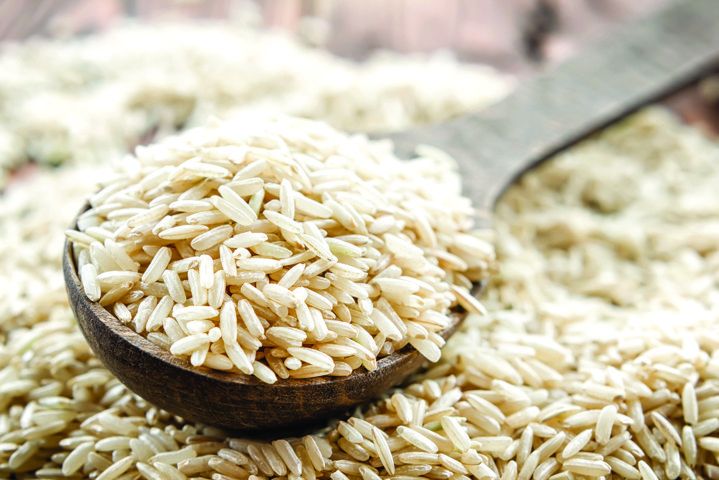
Insecticides and Fungi to Reduce Pest Damage
Insecticides are commonly used to reduce pest damage. Treating rice seeds with chlorantraniliprole before planting is now standard – and is effective against rice water weevils. Drs Stout and Wilson and their colleagues are investigating the effect of chlorantraniliprole on multiple pests out in the field. Their preliminary evidence indicates that treating seeds with chlorantraniliprole reduces sugarcane borer growth and fitness. Significantly, they have found that chlorantraniliprole seed treatment also reduces Mexican rice borer field infestations by as much as 80%. As sugarcane borers and Mexican rice borers attack later in the year, they speculate that by then, much of the insecticide will have degraded or dissolved away, and will no longer be very effective. Therefore, they hope to optimise chlorantraniliprole application against rice water weevils, sugarcane borers and Mexican rice borers.
It is not only insect pests that affect rice yields, but also microorganisms that live on and in the rice plants – bacteria and fungi. These microorganisms can be good, bad or neutral to the host plant. Arbuscular mycorrhizal fungus are soil fungi that that colonise plant roots, and form a symbiotic relationship with the plant. This fungus can help plant roots absorb more nutrients, and can, in some cases, provide tolerance against pests. An ongoing collaborative project between Dr Stout’s group and Marco Cosme at Utrecht University in the Netherlands – led by graduate research assistant Lina Bernaola, is investigating the impact of arbuscular mycorrhizal fungi on a plant’s susceptibility to insect pests (rice water weevils and fall armyworms) and pathogenic sheath blight. They found that, contrary to expectations, the fungus actually increased the plants’ susceptibility to these pests.
Chemical Ecology – Ecological Interactions Mediated by Molecules
The web of ecological interactions between organisms in an agricultural habitat such as a rice or sugarcane field is complex. Drs Stout and Wilson and their colleagues are committed to elucidating these interactions, through the field of chemical ecology – the study of how chemicals mediate the ecological interactions among organisms. ‘The study of chemical ecology is particularly fascinating because it reveals the unseen way in which organisms interact and communicate,’ says Dr Wilson.
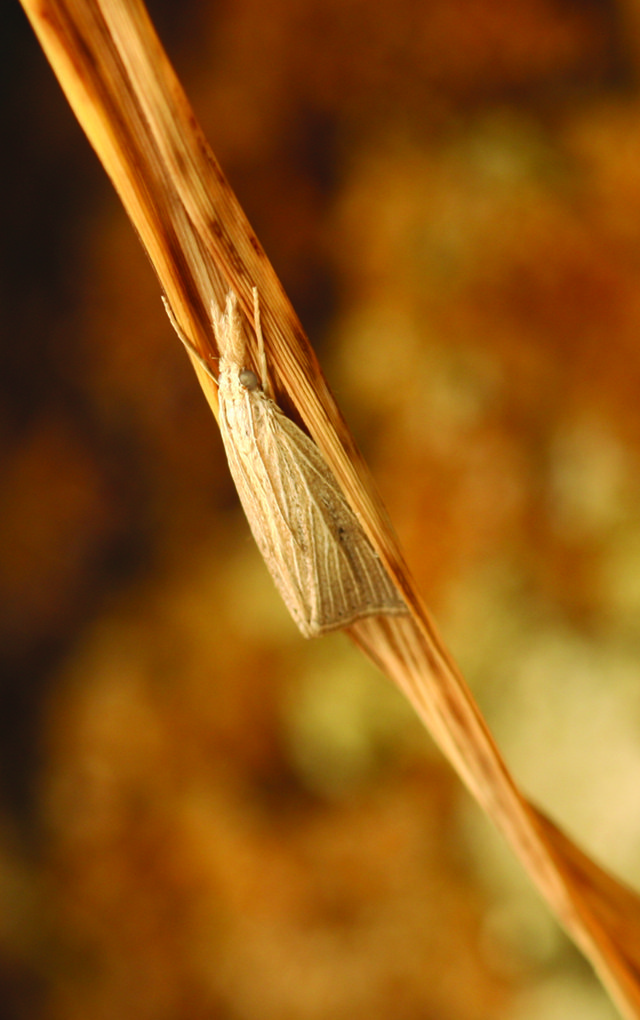
‘By understanding how plants respond to stresses and how they change in response to environmental conditions, we can develop ways of manipulating the expression of plant resistance’ – Dr Stout
One example of chemical ecology is induced resistance – whereby herbivory, infection, or other biotic or abiotic stresses trigger a biochemical response in a plant making it more resistant to subsequent attackers. ‘By understanding how plants respond to stresses and how they change in response to environmental conditions, we can develop ways of manipulating the expression of plant resistance,’ explains Dr Stout. When under attack by insect pests, plants can produce hormone molecules that elicit plant-defence pathways to ward off the pests – including jasmonic acid, salicylic acid and ethylene. The team uses this knowledge to develop special insecticides that mimic these natural hormones, and adjuvants that amplify their effects. They found that treatment of cotton and soybean with jasmonic acid reduced growth of fall armyworms, whereas treatment of certain elicitors, benzothiadiazole and hairpin, actually resulted in larger fall armyworms.

Out in the field, rice plants are typically attacked by multiple pests. However, it is not clear whether infestation of one pest makes rice stronger or weaker against future infestations. Herbivory can induce physiological and metabolic changes in crops – such as production of resistance-related molecules, morphological changes or changes in plant architecture – which may make plants less susceptible to future herbivory. However, this has not been extensively tested in the context of the southern US rice ecosystems. The rice water weevil is the major early-season pest of rice. Weevils live through the winter in the forests and grassy habitats surrounding rice fields. In early spring, they fly to rice fields, feed on the newly-planted rice and lay their eggs on the submerged leaves in flooded fields. After hatching, the larvae move through the leaves and stems and feed on the roots. Drs Wilson and Stout hypothesise that early-season rice water weevil infestation will induce resistance to further infestation by Mexican rice borers, and hope to confirm this. They also aim to elucidate the plant mechanisms of this induced resistance.
Drs Wilson and Stout have pioneered the application of chemical ecology, induced resistance and integrated pest management strategies as a sophisticated approach to combatting pests and improving yields. Beyond the lab, they also endeavour to apply their research insights to the field, and educate producers and industry bodies on best practices.
Meet the researchers

Dr Michael Stout
Department of Entomology
Louisiana State University
Baton Rouge, Louisiana
USA
Dr Michael Stout obtained his PhD in Entomology at UC Davis in 1996, for a dissertation entitled ‘Induced Resistance in Tomatoes’. In 1997, he started as an Assistant Professor in the Department of Entomology, Louisiana State University, and rose to the rank of Professor in 2007. Since 1997, he has also held a position at the AgCenter (Agricultural Center) at Louisiana State University. In 2014, he became co-director of the Center for Research Excellence in Plant Biotechnology and Crop Development, and in 2016, he was appointed head of the Department of Entomology.
CONTACT
E: mstout@agcenter.lsu.edu
T: (+1) 225 578 1837
W: http://www.lsuagcenter.com/profiles/mstout; http://www.entomology.lsu.edu/stout.html

Dr Blake Wilson
Department of Entomology
Louisiana State University
Baton Rouge, Louisiana
USA
Dr Blake Wilson has been working within the Rice and Sugarcane Lab in the Department of Entomology, Louisiana State University, since 2009, when he started as an undergraduate lab assistant. He obtained his PhD in Entomology in 2016, and continued his studies as a post-doctoral researcher. His special research interests include pest management strategies for sugarcane, rice, and bioenergy feedstocks. In March 2017, he became an Assistant Professor of field crops entomology with the Louisiana State University AgCenter.
CONTACT
E: bwilson@agcenter.lsu.edu
T: (+1) 985 373 6193
W: http://www.lsuagcenter.com/profiles/bwilson
KEY COLLABORATORS
MO Way, Texas A&M University, USA
Julien Beuzelin, University of Florida Institute of Food and Agricultural Sciences, USA
Marco Cosme, Utrecht University, Netherlands
Jeremy D Allison, Great Lakes Forestry Centre, Canada
FUNDING
Louisiana Rice Research Board
United States Department of Agriculture – National Institute of Food and Agriculture
REFERENCES
BE Wilson, JM Beuzelin and TE Reagan, Population distribution and range expansion of the invasive Mexican rice borer (Lepidoptera: Crambidae) in Louisiana, Environmental Entomology, 2017, 46, 175–182.
BE Wilson, JM Beuzelin, JD Allison, TE Reagan, The active space of Mexican rice borer pheromone traps, Journal of Chemical Ecology, 2016, 42, 888–895.
JW Gordy, BR Leonard, D Blouin, JA Davis, MJ Stout, Comparative effectiveness of potential elicitors of plant resistance against Spodoptera frugiperda (J. E. Smith) (Lepidoptera: Noctuidae) in four crop plants. PLOS ONE, 2015, 10, e0136689.
BE Wilson, TN Hardy, JM Beuzelin, MT VanWeelden, TE Reagan, R Miller, J Meaux, MJ Stout, and CE Carlton, Expansion of the Mexican rice borer (Lepidoptera: Crambidae) into rice and sugarcane in Louisiana, Environmental Entomology, 2015, 44, 757–766.
JK Sidhu, JT Hardke, MJ Stout, Efficacy of Dermacor-X-100® Seed Treatment Against Diatraea saccharalis (Lepidoptera: Crambidae) on Rice, Florida Entomologist, 2014, 97, 224–32.


